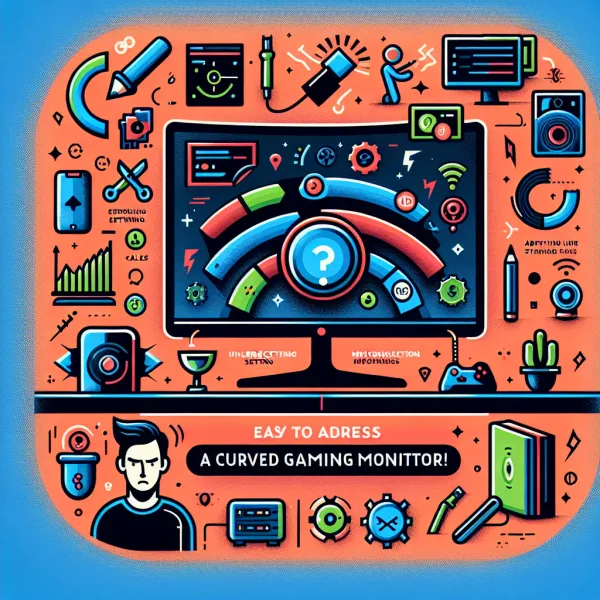5 Common Problems with the Gigabyte G32QC-A Monitor and How to Address Them
5 Common Problems with the Gigabyte G32QC-A Monitor and How to Address Them
The Gigabyte G32QC-A is a popular curved gaming monitor known for its immersive 32-inch display, 165Hz refresh rate, and QHD resolution. However, like any tech product, it’s not without its flaws. In this article, we’ll explore the five most common problems users encounter with the Gigabyte G32QC-A and provide actionable solutions to help you get the most out of your monitor.
1. Flickering Issues at High Refresh Rates
One of the most frequently reported problems with the Gigabyte G32QC-A is screen flickering, particularly when running at its maximum refresh rate of 165Hz. This issue can be frustrating, especially for gamers who rely on smooth visuals for competitive play.
Solution: Ensure that your graphics card drivers are up to date. Additionally, try using a high-quality DisplayPort cable, as lower-quality cables can sometimes cause flickering. If the issue persists, lowering the refresh rate to 144Hz may provide a more stable experience without compromising too much on performance.
2. Backlight Bleeding
Backlight bleeding is another common complaint among Gigabyte G32QC-A users. This issue occurs when light leaks around the edges of the screen, creating uneven brightness levels, especially noticeable in dark scenes.
Solution: While some level of backlight bleeding is normal for VA panels, you can minimize its impact by adjusting the monitor’s brightness and contrast settings. If the bleeding is excessive, consider contacting Gigabyte support for a replacement, as it may be a manufacturing defect.
3. Ghosting and Motion Blur
Despite its high refresh rate and low response time, some users have reported ghosting and motion blur during fast-paced gaming sessions. This can detract from the overall gaming experience.
Solution: Enable the monitor’s Overdrive setting in the on-screen display (OSD) menu. Experiment with different Overdrive levels (such as “Balanced” or “Speed”) to find the best balance between reducing ghosting and avoiding overshoot artifacts.
4. HDR Performance Limitations
The Gigabyte G32QC-A supports HDR, but its HDR performance is often criticized for being underwhelming. The monitor’s peak brightness and color accuracy may not meet the expectations of users looking for a true HDR experience.
Solution: If HDR performance is disappointing, you may want to disable HDR mode and stick to SDR (Standard Dynamic Range) for better color consistency. Alternatively, consider adjusting the monitor’s color settings manually to improve the visual output.
5. Connectivity and Compatibility Issues
Some users have experienced issues with the monitor not being detected by their PC or encountering problems when switching between inputs. These issues can disrupt your workflow or gaming sessions.
Solution: Ensure that you’re using the correct input source on the monitor. Double-check that your cables are securely connected and not damaged. Updating your GPU drivers and firmware for the monitor can also resolve compatibility issues. If problems persist, try resetting the monitor to its factory settings.
Final Thoughts
The Gigabyte G32QC-A is a feature-packed monitor that delivers excellent performance for its price point. While it does have its share of issues, most of them can be resolved with a bit of troubleshooting and adjustments. By addressing these common problems, you can enjoy a smoother and more immersive experience with your Gigabyte G32QC-A.
Have you encountered any of these issues with your Gigabyte G32QC-A? Share your experiences and solutions in the comments below!
